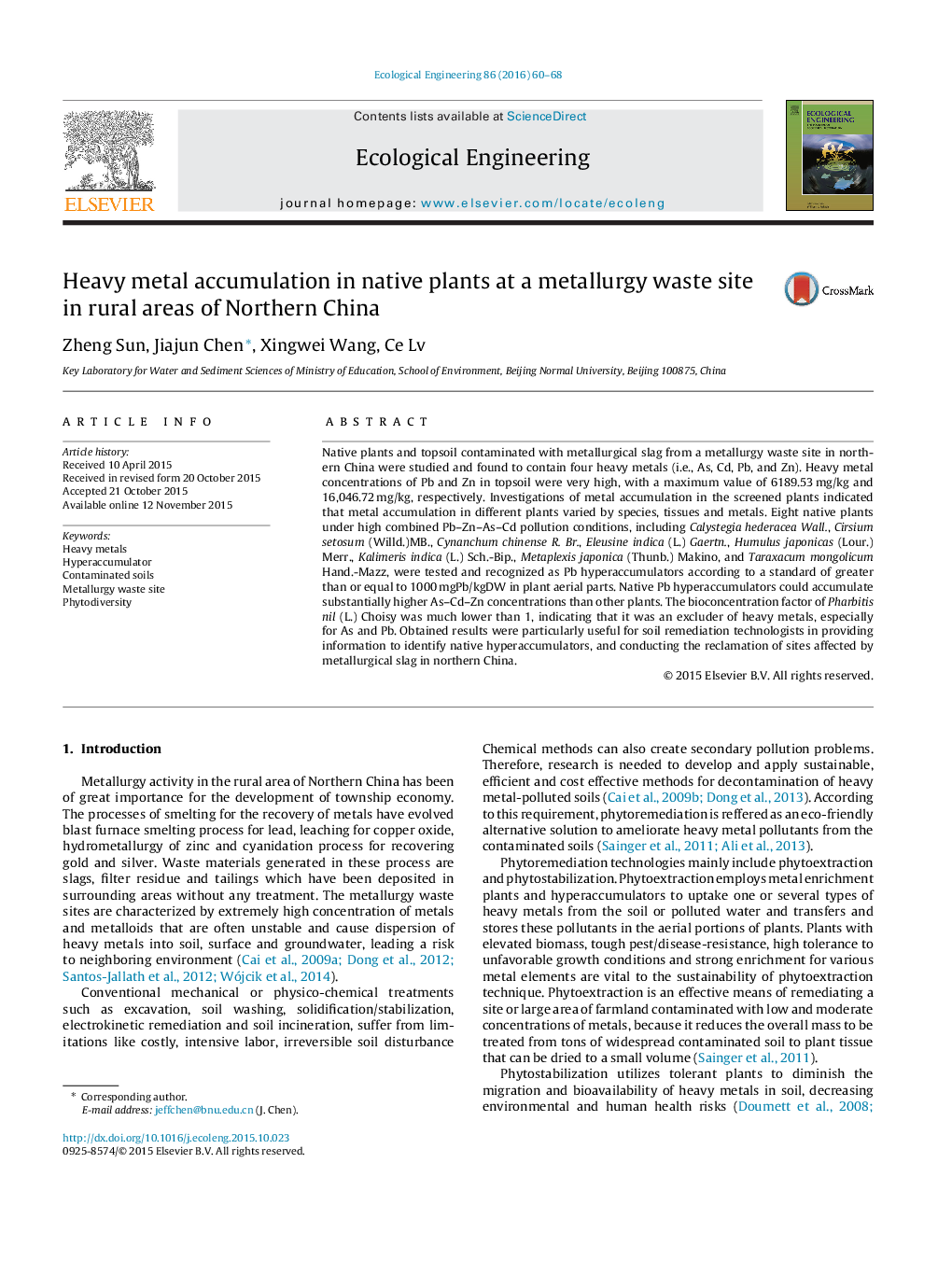| Article ID | Journal | Published Year | Pages | File Type |
|---|---|---|---|---|
| 4388915 | Ecological Engineering | 2016 | 9 Pages |
•We studied the concentration of toxic elements in rural metallurgy waste site.•Survey of the phytodiversity of naturally growing plant species on waste site.•Some native plants were hyper accumulators of Pb or Cd metals.•One metal-excluder plant species Pharbitis nil (L.) Choisy was also found.
Native plants and topsoil contaminated with metallurgical slag from a metallurgy waste site in northern China were studied and found to contain four heavy metals (i.e., As, Cd, Pb, and Zn). Heavy metal concentrations of Pb and Zn in topsoil were very high, with a maximum value of 6189.53 mg/kg and 16,046.72 mg/kg, respectively. Investigations of metal accumulation in the screened plants indicated that metal accumulation in different plants varied by species, tissues and metals. Eight native plants under high combined Pb–Zn–As–Cd pollution conditions, including Calystegia hederacea Wall., Cirsium setosum (Willd.)MB., Cynanchum chinense R. Br., Eleusine indica (L.) Gaertn., Humulus japonicas (Lour.) Merr., Kalimeris indica (L.) Sch.-Bip., Metaplexis japonica (Thunb.) Makino, and Taraxacum mongolicum Hand.-Mazz, were tested and recognized as Pb hyperaccumulators according to a standard of greater than or equal to 1000 mgPb/kgDW in plant aerial parts. Native Pb hyperaccumulators could accumulate substantially higher As–Cd–Zn concentrations than other plants. The bioconcentration factor of Pharbitis nil (L.) Choisy was much lower than 1, indicating that it was an excluder of heavy metals, especially for As and Pb. Obtained results were particularly useful for soil remediation technologists in providing information to identify native hyperaccumulators, and conducting the reclamation of sites affected by metallurgical slag in northern China.
